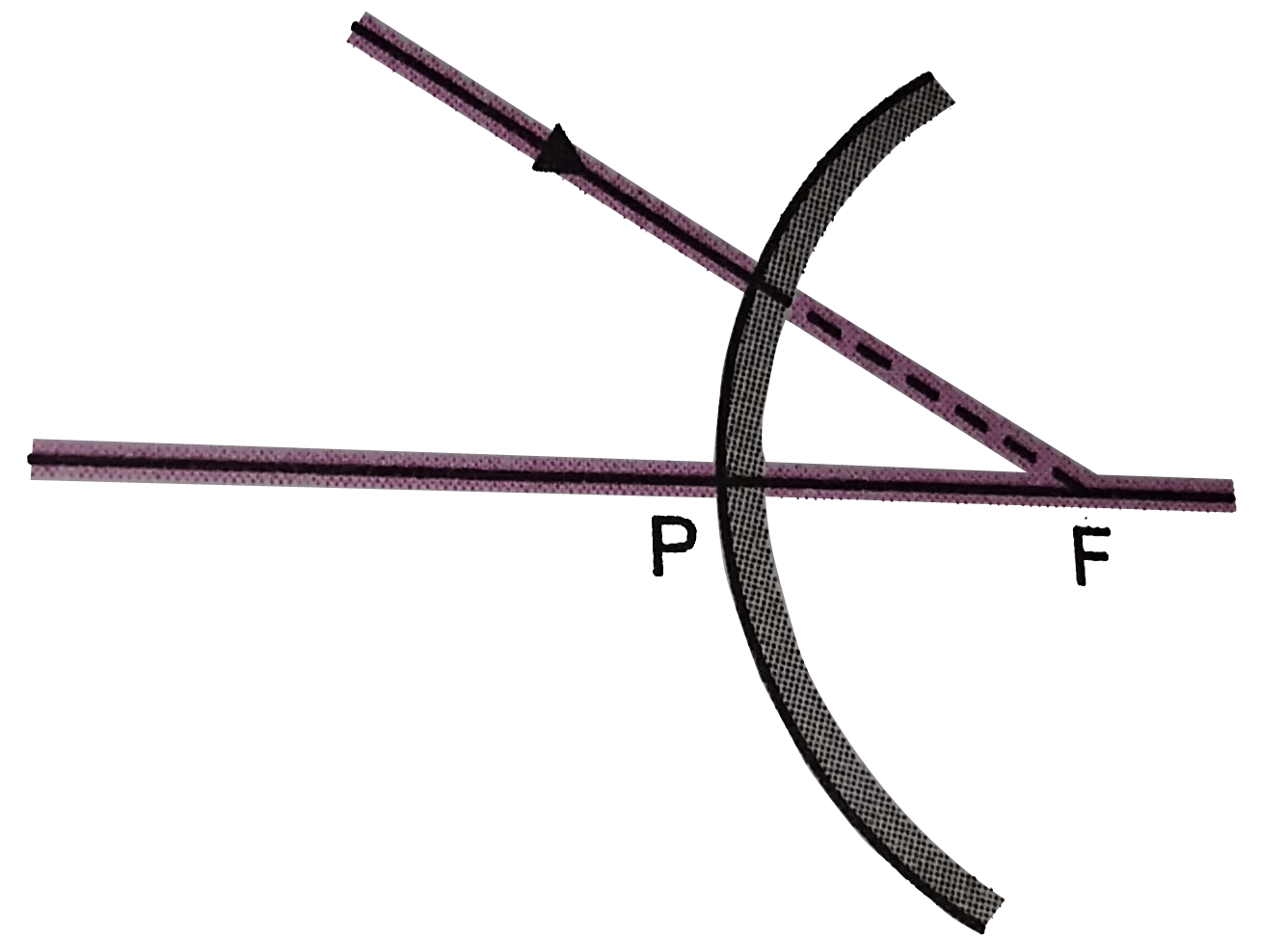Can the reflected rays be further reflected if incident on another mirror? Comment.
Step-by-Step Solution:
1. Understanding Reflection: When light rays hit a mirror, they reflect off the surface according to the law of reflection, which states that the angle of incidence is equal to the angle of reflection.
2. Incident Ray on First Mirror: Consider a scenario where a light ray strikes the first mirror. This ray is called the incident ray. It reflects off the first mirror, creating a reflected ray.
3. Reflected Ray Incident on Second Mirror: The reflected ray from the first mirror can then travel towards a second mirror. When this reflected ray strikes the second mirror, it becomes an incident ray on this second mirror.
4. Reflection from the Second Mirror: The reflected ray from the second mirror will again follow the law of reflection. It will reflect off the second mirror, creating a new reflected ray.
5. Multiple Reflections: This process can continue. If you place additional mirrors in the path of the reflected rays, each time a ray reflects off a mirror, it can be considered as a new incident ray for the next mirror. This phenomenon is known as multiple reflections.
6. Conclusion: Therefore, yes, the reflected rays can indeed be further reflected if they strike another mirror. This is a common occurrence in setups involving multiple mirrors, such as in periscopes or in rooms with mirrored walls.
---
Topper's Solved these Questions
- LIGHTBOOK - PEARSON IIT JEE FOUNDATIONCHAPTER - LIGHTEXERCISE - CLASSROOM CORNER (C. Long Answer Type Questions )
15 Videos
- LIGHTBOOK - PEARSON IIT JEE FOUNDATIONCHAPTER - LIGHTEXERCISE - COMPETITION CORNER
59 Videos
- LIGHTBOOK - PEARSON IIT JEE FOUNDATIONCHAPTER - LIGHTEXERCISE - CLASSROOM CORNER (A. Very Short Answer Type Questions) ( Assertion - Reason Type - Questions)
4 Videos
- KINEMATICS BOOK - PEARSON IIT JEE FOUNDATIONCHAPTER - KINEMATICS EXERCISE - CONCEPT APPLICATION (Level 3) (Application Based Questions )
5 Videos
- MAGNETISM BOOK - PEARSON IIT JEE FOUNDATIONCHAPTER - MAGNETISM EXERCISE - CONCEPT APPLICATION (Level 3)
4 Videos
Similar Questions
By what angle the mirror must be rotated such that the reflected ray becomes vertical. Let the light ray incident on the plane mirror with an angle of incidence theta with respect to horizontal
View SolutionA light ray incident on a plane mirror gets reflected from it. Another plane mirror is placed such that the reflected ray from the first mirror is incident on it If the reflected ray from the second mirror travels perpendicular to the indecent ray on the first mirror, determine the angle between two plane mirrors.
View Solution
Knowledge Check
A light ray is incident on a horizontal plane mirror at an angle of 45∘ . At what angle should a second plane mirror be placed in order that the reflected ray finally be reflected horizontally from the second mirror, as shown in figure
 Aθ=30∘Bθ=24∘Cθ=22.5∘Dθ=67.5∘
Aθ=30∘Bθ=24∘Cθ=22.5∘Dθ=67.5∘Which one of the following is the correct angle between the
incident and reflected rays when a ray of light incident
normally on a plane mirror?Aa 180∘Bb 90∘Cc 45∘Dd 0∘What are the laws of reflection?
(i) The angle of incidence is equal to the angle of reflection, and
(ii) The incident ray, the normal to the mirror at the point of incidence and the reflected ray, all lie in the same plane.
(iii) Incident ray is equal to emergent ray.
(iv) Reflected ray is equal to emergent ray.A(i) and (ii)B(i) and (iv)C(i), (ii) and (iv)DAll the above
The mirrors are perpendicular to each other as shown in the Fig. A light ray AB is incident on the mirror M1. Then the reflected ray will also suffer a reflection from the mirror M2). Then the final ray after reflection from M2 will be parallel to the incident ray, if -

View SolutionDraw the reflected ray when ray the incident ray were to pass through focus of the mirror.

View SolutionIn a plain mirror the angle between the incident ray and reflected ray is 60∘ . The angle between incident ray and mirror is?
View SolutionA ray of light is incident on a plane mirror, making an angle 'q' with the surface of the mirror. Arrange the following steps in sequential order to calculate the angle between the incident light ray and the reflected light ray.
(A) Draw a normal line on the plane mirror at the point of incidence of the light ray.
(B) Note down the angle between the plane mirror and the incident light ray.
(C) The sum of the angle of incidence and the angle between the plane mirror and the incident ray is 90∘.Determine the angle of incidence.
(D) From the laws of reflection, the angle of incidence is equal to the angle of reflection. Then the sum of the angle of incidence and the angle of reflection gives the angle between the incident light ray and the reflected light ray.
View SolutionA ray of light is incident on a plane mirror, making an angle 'q' with the surface of the mirror. Arrange the following steps in sequential order to calculate the angle between the incident light ray and the reflected light ray.
(A) Draw a normal line on the plane mirror at the point of incidence of the light ray.
(B) Note down the angle between the plane mirror and the incident light ray.
(C) The sum of the angle of incidence and the angle between the plane mirror and the incident ray is 90∘.Determine the angle of incidence.
(D) From the laws of reflection, the angle of incidence is equal to the angle of reflection. Then the sum of the angle of incidence and the angle of reflection gives the angle between the incident light ray and the reflected light ray.
View Solution
